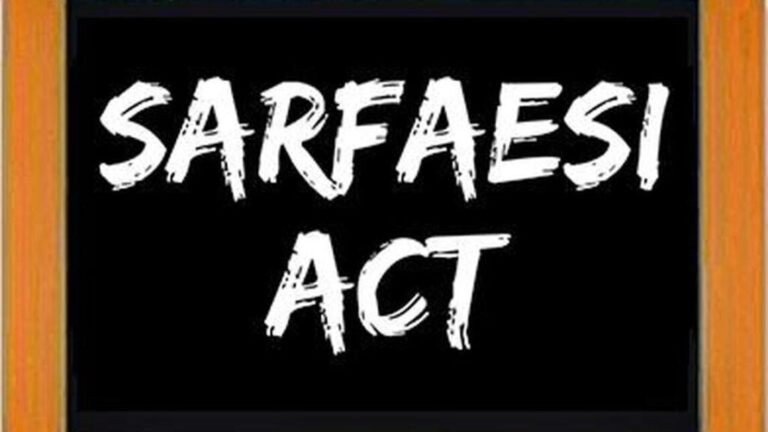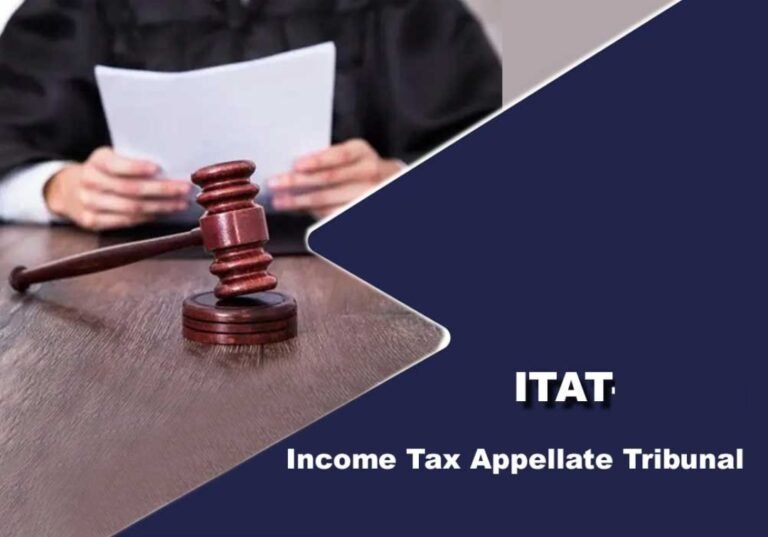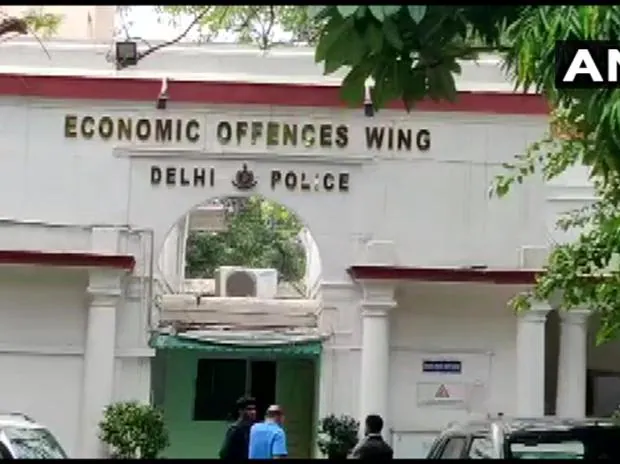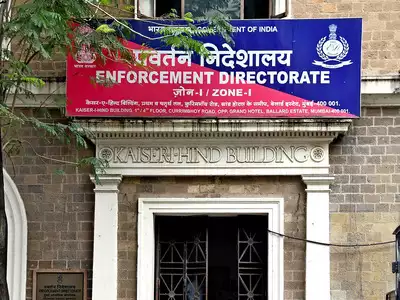Financial Matter
Goods and Services Tax (GST)

EMERGENCE OF LITIGATION CHALLENGES
The emergence of litigation challenges surrounding the implementation of the Goods and Services Tax (GST) in India has been a significant aspect of the tax reform process. While GST aimed to simplify the tax structure and streamline compliance, it also brought about various legal and procedural complexities, leading to a surge in disputes and litigation. Several factors contribute to the emergence of these challenges:
Complexity of GST Laws:
The GST regime introduced a unified tax system, but it also brought with it a complex set of laws, rules, and regulations. The GST Act, along with numerous notifications, circulars, and clarifications issued by the government, created confusion and ambiguity among taxpayers regarding the interpretation and application of tax provisions. This complexity often leads to disputes between taxpayers and tax authorities over issues such as classification of goods and services, valuation, input tax credit eligibility, and compliance requirements.
Transitional Issues:
The transition from the previous tax regime to GST posed significant challenges for businesses, particularly in terms of transitional credits, valuation of closing stock, and compliance with new GST procedures. Disputes arose regarding the eligibility and calculation of transitional credits, leading to disagreements between taxpayers and tax authorities. Lack of clarity on transitional provisions and delayed implementation of transitional mechanisms exacerbated the litigation challenges during the initial phase of GST implementation.
Technology Glitches:
The GST regime introduced a technology-driven tax compliance system with the Goods and Services Tax Network (GSTN) serving as the IT backbone for GST administration. However, technical glitches and operational issues with the GSTN portal, such as system downtime, errors in return filing, and delays in processing refunds, hindered smooth compliance and gave rise to disputes between taxpayers and tax authorities. These technological challenges added to the burden of taxpayers and contributed to the escalation of litigation.
Interpretational Differences:
The interpretation of GST laws and provisions by taxpayers, tax consultants, and tax authorities often varies, leading to conflicting views and legal disputes. Differences in understanding and application of tax provisions, ambiguous language in the law, and conflicting judicial precedents further complicate matters and contribute to litigation challenges. Issues such as the scope of exemptions, determination of place of supply, and treatment of composite and mixed supplies are frequently contested in GST disputes due to interpretational differences.
Compliance Burden:
The compliance requirements under GST, including filing of multiple returns, maintenance of detailed records, and adherence to strict invoicing norms, impose a significant burden on businesses, especially small and medium enterprises (SMEs). Non-compliance or errors in compliance often result in penal actions, tax demands, and litigation initiated by tax authorities. The compliance burden adds to the overall litigation challenges in the GST ecosystem.
PHASES OF GST LITIGATION:
- GST Audit & Assessment:
Tax authorities conduct an audit of taxpayer-provided information, including returns and relevant records. In case of inconsistencies, they issue show-cause notices.
Notice Under Section 73 of the CGST Act, 2017: For demands under the normal period.
Notice Under Section 74 of the CGST Act, 2017: For demands under the extended period.
- Protest:
Taxpayers can register objections if they disagree with the audit or assessment findings.
- Adjudication:
If objections are not resolved, the case is referred to the adjudicating authority for a final decision.
- Appeal:
Taxpayers have the right to appeal to the appellate authority if they are dissatisfied with the decision.
TYPES OF NOTICES ISSUED BY GST DEPARTMENT
Notices are issued by the GST department at various stages. Mainly these stages can be categorized into three parts: pre-litigation notices, notices during litigation and other miscellaneous notices. The provisions that provide such notices have a combination of different sections by the help of which authority clears such matters. They are listed as below
- PRE-LITIGATION NOTICES:
- Section 61: Scrutiny of Returns:
The proper officer may scrutinize the return and related particulars furnished by the registered person to verify the correctness of the return and inform him of the discrepancies noticed, if any, in such manner as may be prescribed and seek his explanation thereto.
- Section 65:Notice for conducting Audit (by tax authorities):
The commissioner or any officer authorised by him, by way of a general or a specific order, may undertake audit of any registered person for such period, at such frequency and in such manner as may be prescribed. The registered person shall be informed by way of a notice not less than fifteen working days prior to the conduct of audit in such manner as may be prescribed.
- Section 66: Special audit by Chartered Accountant/Cost Accountant (who is appointed by tax authorities):
If at any stage of scrutiny, inquiry, investigation or any other proceedings before him, any officer not below the rank of Assistant Commissioner, having regard to the nature and complexity of the case and the interest of revenue, is of the opinion that the value has not been correctly declared or the credit availed is not within the normal limits, he may, with the prior approval of the Commissioner, direct such registered person by communication in writing to get his records including books of account examined and audited by a Chartered Accountant or a Cost Accountant as may be nominated by a Commissioner.
- Section 67: Inspection, search and seizure
The power authorised not below the rank of Joint commissioner shall have the power to inspect, search and seize in case of any discrepancies, notices.
- Section 70: Summons: The proper officer under this Act shall have power to summon any person whose attendance he considers necessary either to give evidence or to produce a document or any other thing in any inquiry in the same manner, as provided in the case of a civil court under the provisions of the Code of Civil Procedure, 1908. Every such inquiry referred shall be deemed to be a “judicial proceedings” within the meaning of Section 193 and Section 228 of the Indian Penal Code.
- NOTICES DURING LITIGATION
- Section 73: Show Cause Notice under normal period for demand. It can be issued within 33 months from the due date of GSTR-9:
This section deals about determination of tax not paid or short paid or erroneously refunded or input tax credit wrongly availed or utilized for any reasons other than fraud or any willfulmis-statement or suppression of facts. When a person has not paid or short paid or erroneously received refund or wrongly availed or utilized input tax credit, the proper officer shall serve notice on the said person requiring him to show cause as to why he should not pay the amount specified in the notice along with interest payable and a penalty leviable as per the provisions of the act. A show cause notice will be issued in similar form as was being done in erstwhile pre-GST era but online. Additionally, a summary of the total demand in Form DRC-01 also will be issued along with the show cause notice.
- Section 74: Show Cause Notice under extended period for demand. It can be issued within 54 months from the due date of GSTR-9:
This section deals about determination of tax not paid or short paid or erroneously refunded or input tax credit wrongly availed or utilized by reasons of fraud or any willfulmis-statement or suppression of facts. When a person has not paid or short paid or erroneously received refund or wrongly availed or utilized input tax credit by reasons of fraud or any willfulmis-statement or suppression of facts to evade tax, the proper officer shall serve notice on the said person requiring him to show cause as to why he should not be asked to pay the amount specified in the notice along with interest payable thereon under section 50 and with 100% of tax as penalty leviable. A show cause notice will be issued in similar form as was being done in erstwhile pre-GST era but online. Additionally, a summary of the total demand in Form DRC-01 also will be issued along with the show cause notice.
- Section 76: Notice for demand of collected Tax which is not deposited:
This deals with a situation of “tax collected but not paid to Government”. The provision begins with non-obstante clause “Notwithstanding anything to the contrary in any order or direction of any Appellate Authority or Appellate Tribunal or Court or in any other provisions of this Act or the rules made thereunder or any other law for the time being in force, every person who has collected from any other person any amount as representing the tax under this act, and has not paid the said amount to the Government, shall forthwith pay the said amount to the Government irrespective of whether the supplies in respect of which such amount was collected are taxable or not”.
- OTHER NOTICES (MISCELLANEOUS)
Section 79: Recovery of tax
- Notice when there is an outstanding amount due to the default of a Vendor
- E-Way Bill Notices.
- Investigations by CAG, Intelligence, Preventive or Anti-Evasion
REASONS FOR INITIATING GST LITIGATION
While managing a business, companies take several actions such as filing GST returns, GST refunds, and claiming ITC. And in the course of carrying out such actions, sometimes certain mishaps also happen. These mishaps later get converted into litigation.
The taxpayers must keep in mind that they have to duly follow compliances related to GST. Otherwise, they would be at risk when their tax positions, compliances, and payments would be verified while audited by the tax authorities.
However, the taxpayers should be made aware that penalties would be levied in case of a notice default during audits. Interest implications can also arise if taxes are not paid or are short-paid.
APPEAL AGAINST THE RESULT OF THE AUDIT
Taxpayers have the right to file an appeal when they are not satisfied with the result of Assessments or Audits. To file an appeal there is a fair appeal mechanism provided. Such mechanisms are unbiased and independent of the parties.
When a progressive law like GST is considered, business entities must understand the basics of GST Litigation and Departmental Audits. This would strengthen their defense strategy.
Further, when multiple entities in a group or (in a legal entity) litigations across multiple GSTINs are handled, the following are the most common factors of the Industry given priority when it comes to litigations:
- keeping a track of all the matters that are actionable,
- To monitor the progress of the litigations and preparedness regularly,
- To maintain all the required documents and information that is needed during the litigations from its original source,
Considering the fact that GST is a progressive law, it is critical to update the case files of these litigations. Particularly tracking the recent developments through notifications, judicial precedence, and circulars.
THE PROCEDURE OF GST LITIGATION
In order to streamline more than one ongoing litigations/case, the assessee can follow the below process-
- Analyzing the Notice or Show Cause Notice or Order- After receiving the Show Cause Notice or General Notice from the department of GST, it is important for the business entity and the company to firstly verify it and analyze it,
- Briefing the company – The next step is preparing the brief of the company and then deciding the way to deal with the notice, and also making a plan of action for assurance to defend the company at all possible costs,
- Collating required information or data or reconciliations- In order to prove the case of your company, a lot of pieces of evidence, data, and related information and certain documents will be required, to produce before the officials,
- Validating and verifying the aforesaid information and data- After the data is collected, it is necessary to validate and verify it so that the accuracy of data is maintained,
- Drafting a suitable Appeal or Reply after thorough research for legal precedence- Once the documentation and information are in place, drafting a suitable reply is important, this draft would act as a reply to the notice received,
- Submitting the Appeal reply- Once the appeal or the reply is ready, it is essential to submit it to the concerned department
- Appearance before Commissioner, Adjudicating Authority, or Tribunal- The last part of the adjudication process is taking part in the appearance of a case before the concerned Adjudicating Authority to defend the case
Income Tax

Income tax is a crucial aspect of modern economies, serving as a primary source of revenue for governments worldwide. It’s a system where individuals and businesses contribute a portion of their earnings to fund public services and government operations. Understanding how income tax works is essential for financial planning and ensuring compliance with legal obligations.
In most countries, income tax operates on a progressive scale, meaning the more you earn, the higher percentage of tax you pay. This progressive nature aims to distribute the tax burden more equitably, with those who can afford it contributing more. However, tax rates and brackets vary significantly between countries, and even within regions of the same country.
Various factors influence the amount of income tax an individual or business owes, including their total income, deductions, credits, and exemptions. Deductions, such as expenses related to business, education, or healthcare, can reduce taxable income. Tax credits provide a dollar-for-dollar reduction in the actual tax owed, making them particularly valuable.
Compliance with income tax laws is mandatory, and failure to fulfill tax obligations can result in penalties, fines, or legal consequences. To ensure compliance, tax authorities often require individuals and businesses to file annual tax returns, disclosing their income and claiming any applicable deductions or credits.
Understanding income tax can empower individuals and businesses to make informed financial decisions and plan for their future effectively. Seeking advice from tax professionals or utilizing available resources can help navigate the complexities of the tax system and ensure compliance while optimizing tax efficiency.
Arbitration

Arbitration is a dispute resolution process increasingly favored by individuals and businesses worldwide. Unlike traditional litigation, which involves court proceedings, arbitration offers a private, flexible, and often faster method of resolving conflicts outside of the formal judicial system.
In arbitration, parties agree to submit their dispute to one or more impartial arbitrators who render a binding decision, known as an award. The arbitrators, chosen by mutual consent or as specified in a contract, possess expertise in the subject matter relevant to the dispute, ensuring a more informed and specialized resolution process.
One of the key advantages of arbitration is its flexibility. Parties have the autonomy to tailor the arbitration process to their specific needs, including selecting arbitrators, determining procedural rules, and scheduling hearings at their convenience. This flexibility often results in quicker resolutions compared to court litigation, which can be protracted due to backlog and procedural complexities.
Confidentiality is another significant benefit of arbitration. Unlike court proceedings, which are typically public record, arbitration proceedings are private and confidential. This confidentiality can be crucial for businesses seeking to protect sensitive information or preserve valuable business relationships while resolving disputes.
Moreover, arbitration awards are generally enforceable in courts, providing parties with a reliable mechanism to ensure compliance with the resolution reached. This enforcement mechanism adds a layer of security and legitimacy to the arbitration process, fostering trust and confidence among parties involved.
Overall, arbitration offers a compelling alternative to traditional litigation, providing parties with a faster, more flexible, and often more confidential means of resolving disputes. Its popularity continues to grow as individuals and businesses seek efficient and effective methods of resolving conflicts in an increasingly complex global landscape.
SARFAESI(Loan)

The Securitization and Reconstruction of Financial Assets and Enforcement of Security Interest Act (SARFAESI) is a significant legislation in India aimed at empowering financial institutions to recover non-performing assets (NPAs) more efficiently. Enacted in 2002, SARFAESI provides a legal framework for banks and other financial institutions to expedite the recovery of loans secured by movable or immovable property, without the intervention of the court.
Under SARFAESI, lenders have the authority to enforce the security interest without the need for court intervention, provided certain conditions are met. These conditions include issuing a notice to the borrower, allowing them an opportunity to cure the default, and providing details of the outstanding debt. If the borrower fails to comply within the stipulated time frame, the lender can proceed with the sale of the secured assets.
One of the key features of SARFAESI is the establishment of asset reconstruction companies (ARCs) to acquire NPAs from banks and financial institutions, thereby assisting in the resolution and recovery process. ARCs play a crucial role in restructuring and managing distressed assets, ultimately aiding in the cleanup of the banking sector and promoting financial stability.
While SARFAESI has proven to be a valuable tool for lenders in recovering bad debts, critics argue that it lacks adequate safeguards for borrowers and may lead to potential abuse by financial institutions. Concerns have been raised regarding the fairness of the process, particularly for small borrowers who may lack resources to challenge lender actions.
Despite these criticisms, SARFAESI has undoubtedly transformed the landscape of loan recovery in India, providing lenders with a mechanism to address the rising burden of NPAs and promoting a healthier banking sector. As the Indian economy continues to evolve, SARFAESI remains a cornerstone of the country’s financial regulatory framework, balancing the need for creditor rights with the protection of borrower interests.
Direct Tax

Direct taxes are levied directly on individuals and businesses by the government and are based on their income, profits, or assets. Unlike indirect taxes, which are imposed on goods and services, direct taxes are paid directly by the taxpayer to the government. These taxes play a crucial role in funding public services, infrastructure development, and social welfare programs.
The primary types of direct taxes include income tax, corporate tax, and wealth tax. Income tax is levied on the income earned by individuals, including wages, salaries, rental income, and investment gains. Corporate tax, on the other hand, is imposed on the profits earned by companies and businesses. Wealth tax, although less common in many jurisdictions, is levied on the net wealth or assets owned by individuals or households above a certain threshold.
Direct taxes are often progressive in nature, meaning that those with higher incomes or profits are subject to higher tax rates. This progressive taxation system aims to distribute the tax burden more equitably and ensure that those who can afford to contribute more do so.
Governments use various mechanisms to collect direct taxes, including tax withholding from salaries and wages, self-assessment by taxpayers, and audits to verify compliance. Tax authorities also provide deductions, exemptions, and credits to encourage certain behaviors or provide relief to specific groups of taxpayers.
While direct taxes are essential for funding government activities and promoting economic equity, they can also be a source of controversy and debate. Balancing the need for revenue generation with concerns about tax fairness and economic growth is an ongoing challenge for policymakers around the world. Nonetheless, direct taxes remain a fundamental component of fiscal policy in most countries, shaping the relationship between citizens and their governments.
ITAT

The Income Tax Appellate Tribunal (ITAT) holds a pivotal position in India’s tax administration system, serving as an independent judicial body for resolving disputes related to income tax. Established in 1941, ITAT functions as the final fact-finding authority in matters concerning direct taxation, providing an avenue for taxpayers to appeal against decisions made by lower tax authorities.
ITAT operates under the Ministry of Law and Justice, and its members, comprising judicial and accountant experts, are appointed by the President of India. With its headquarters in New Delhi, ITAT operates through multiple benches across various cities in India, ensuring accessibility and efficiency in dispute resolution.
One of the key roles of ITAT is to adjudicate appeals filed by taxpayers against assessments, penalties, and other tax-related issues determined by the Income Tax Department. The tribunal conducts hearings, reviews evidence, and delivers judgments based on the merits of each case. Its decisions are binding on both taxpayers and tax authorities, providing a fair and impartial mechanism for resolving disputes.
ITAT’s significance lies in its expertise and specialized knowledge in tax matters, contributing to consistency and fairness in the interpretation and application of tax laws. Moreover, its quasi-judicial status ensures independence from executive influence, fostering trust and confidence in the tax administration system.
The efficient functioning of ITAT is crucial for promoting taxpayer rights, reducing litigation, and maintaining the integrity of the tax system. By providing an accessible and transparent platform for resolving disputes, ITAT plays a vital role in upholding the rule of law and facilitating economic growth in India.
Economic Offences Wing (EOW)

The Economic Offences Wing (EOW) is a specialized branch of law enforcement tasked with investigating and combating financial crimes and economic offenses. Situated within the police department or as a separate entity in some jurisdictions, the EOW plays a critical role in maintaining the integrity of financial systems and protecting the interests of the public and the economy.
With a primary focus on crimes such as fraud, money laundering, embezzlement, and securities violations, the EOW utilizes a variety of investigative techniques, including forensic accounting, data analysis, and collaboration with other agencies and financial institutions. Its mandate extends to both individual perpetrators and organized criminal networks involved in economic offenses.
The EOW operates within a complex legal framework, often collaborating with regulatory bodies such as the Securities and Exchange Board of India (SEBI), Reserve Bank of India (RBI), and Enforcement Directorate (ED) to ensure compliance with financial regulations and pursue justice against offenders.
One of the key challenges faced by the EOW is the constantly evolving nature of financial crimes, which necessitates ongoing training and adaptation to new technologies and methods employed by criminals. Additionally, coordination with international law enforcement agencies is crucial in cases involving cross-border financial fraud and money laundering.
In summary, the Economic Offences Wing serves as a vital bulwark against financial malfeasance, working tirelessly to safeguard the stability and trustworthiness of economic systems and protect the interests of citizens and investors.
Enforcement Directorate (ED)

The Enforcement Directorate (ED) is a premier law enforcement agency in India tasked with enforcing economic laws and combating financial crimes. Established under the Ministry of Finance, the ED operates under the Prevention of Money Laundering Act (PMLA) and the Foreign Exchange Management Act (FEMA), among other statutes, to investigate and prosecute cases related to money laundering, foreign exchange violations, and economic offenses.
With a mandate to ensure the integrity and stability of India’s financial system, the ED plays a pivotal role in identifying, tracing, and seizing illicitly acquired assets both within the country and abroad. Its jurisdiction extends to a wide array of activities, including terrorism financing, tax evasion, and fraud, making it a key player in maintaining the rule of law and preserving the sanctity of financial transactions.
The ED employs a multifaceted approach to its investigations, leveraging sophisticated tools such as forensic accounting, digital forensics, and international cooperation with other law enforcement agencies. Its efforts are aimed at not only punishing wrongdoers but also deterring future instances of financial crime and safeguarding the interests of the public and the economy.
However, the ED faces significant challenges in its pursuit of justice, including the complexity of financial transactions, the emergence of new technologies for concealing illicit activities, and the need for coordination with various domestic and international stakeholders. Nevertheless, its unwavering commitment to upholding the law and combating economic offenses makes it a vital pillar of India’s law enforcement infrastructure.
